.
Passover: What Did Jesus Do for You?
 “Jesus knew what He would face: “You know that after two days is the Passover, and the Son of Man will be delivered up to be crucified” (Matthew 26:2).
“Jesus knew what He would face: “You know that after two days is the Passover, and the Son of Man will be delivered up to be crucified” (Matthew 26:2).
The spring festivals (found in Leviticus 23) have deep symbolism for Christians today that transcends the sacrificial laws that ended with Christ’s death. The Passover symbolizes the sacrifice of Jesus Christ for our sins. The festival called the Days of Unleavened Bread symbolizes our need to live free of sin, after having our past sins forgiven.
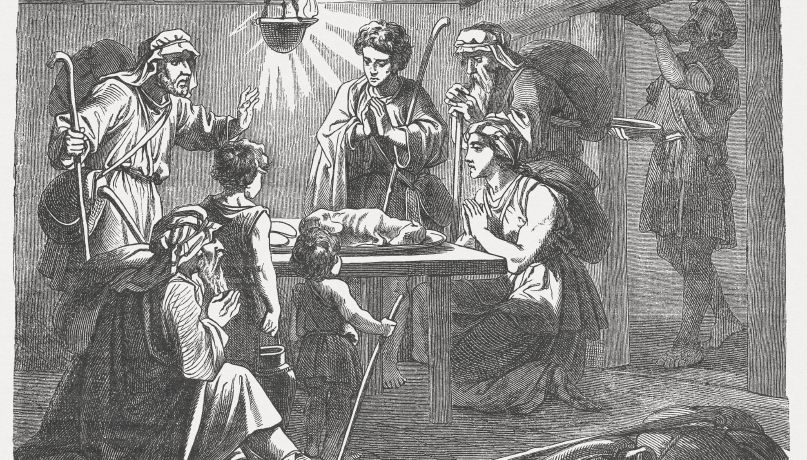 Just before His betrayal and crucifixion, Jesus asked His disciples to prepare for His final Passover (Matthew 26:18-20). This evening, commemorated since the time of the Exodus from Egypt, involved the sacrifice of an unblemished lamb whose blood protected the Israelites while the firstborn of the Egyptians were slain (Exodus 12:5-7, 12-14).
Just before His betrayal and crucifixion, Jesus asked His disciples to prepare for His final Passover (Matthew 26:18-20). This evening, commemorated since the time of the Exodus from Egypt, involved the sacrifice of an unblemished lamb whose blood protected the Israelites while the firstborn of the Egyptians were slain (Exodus 12:5-7, 12-14).
The New Testament makes clear that this lamb represented Jesus Christ. As John the Baptist had announced about Jesus, “Behold! The Lamb of God who takes away the sin of the world!” (John 1:29).
This last Passover was special, and Jesus taught His disciples new elements that would become the basis of the New Testament Passover service.
First, Jesus Christ set the example of love and service through washing His disciples’ feet (John 13:4-13). Then He told them, “If I then, your Lord and Teacher, have washed your feet, you also ought to wash one another’s feet. For I have given you an example, that you should do as I have done to you” (John 13:14-15).
The symbols of the bread and the wine
After the foot washing, Jesus instituted two deeply meaningful symbols of the New Testament Passover.
“And as they were eating, Jesus took bread, blessed and broke it, and gave it to the disciples and said, ‘Take, eat; this is My body.’ Then He took the cup, and gave thanks, and gave it to them, saying, ‘Drink from it, all of you. For this is My blood of the new covenant, which is shed for many for the remission of sins’” (Matthew 26:26-28).
Paul reminded the Church, both Jews and gentiles, of the vital importance of this memorial that represents Christ’s death and a renewal of our commitment to God made at baptism.
Jesus said the bread represented His body. He willingly suffered to take our infirmities and bear our sicknesses (Matthew 8:16-17; Isaiah 53:3-5). Jesus is also the Bread that makes eternal life possible as we allow Him to live in us (Galatians 2:20).
The wine represents His shed blood given for the forgiveness of our sins.
The apostle Paul repeated these Passover instructions about the bread and the wine in 1 Corinthians 11:23-26. He reminded the Church, both Jews and gentiles, of the vital importance of this memorial that represents Christ’s death and a renewal of our commitment to God made at baptism.
Why did Christ have to die?Why did Jesus come to the earth as a human being to die? Because of sin—the destructive thoughts and actions that go against God’s will (1 John 3:4).
God reveals His thinking and way of life throughout the Bible, and especially in His 10 Commandments and His good and beneficial laws that show us how He intends life to be lived. When we break His laws, we bring automatic penalties on ourselves, and especially the penalty of death—eternal death. We have all earned this penalty (Romans 3:23; 6:23).
God, in His perfect eternal justice, must exact the penalty; but in His awesome mercy, Jesus Christ was willing to pay that penalty for us! “For God so loved the world that He gave His only begotten Son, that whoever believes in Him should not perish but have everlasting life” (John 3:16). Christ gave His life so we could repent and be saved (1 Timothy 2:4).
That is the solemn yet joyous message of the annual Passover. This is the first step in God’s plan of salvation. The second step is represented by the second festival, the Feast of Unleavened Bread.”
From: https://lifehopeandtruth.com/life/plan-of-salvation/passover/
Do you have more questions about the Christian Passover? Read “Questions and Answers About the Christian Passover.”
_______
Christ, Our Passover
1 Corinthians 5:7
Therefore purge out the old leaven, that you may be a new lump, since you truly are unleavened. For indeed Christ, our Passover, was sacrificed for us.
“The apostle Paul drew on the lessons of the spring festival season to encourage the Corinthian congregation to remove sin from their lives.
Jesus Christ fulfilled the type of the Passover lamb whose blood protected the Israelite firstborn from death before the exodus from Egypt. After the Passover festival comes the Feast of Unleavened Bread, where yeast and other leavening become a symbol of sin.”
Study more about Passover and the Feast of Unleavened Bread in our free booklet From Holidays to Holy Days: God’s Plan for You.”
Listen to the "Verse by Verse" episode covering this scripture at https://lifehopeandtruth.com/bible/blog/christ-our-passover/?
________
Is Dairy’s Reign Over? (Problems with Dairy and The Dairy Industry)
“Big Dairy is getting desperate. But the demand for plant-based milks keeps going up. Dairy is declining, as the failure of Big Dairy’s latest campaign Februdairy shows. More people are becoming aware of the problems with dairy and the problems with the dairy industry. Could dairy’s prominence be on its way out?
Almonds are the new cow. So are cashews. Coconuts. Beans and peas. And pretty much any plant-based ingredients that can be turned into frothy, creamy, and delicious plant-based milk. No cow required.
Consumers are flocking to nondairy milk like cows flock to hay. It’s looking an awful lot like the tide is turning to greener pastures (perhaps because they’re growing nitrogen-fixing peas).
Facing declining sales and waning consumer interest, the dairy industry launched “Februdairy” — a month-long campaign aimed at revitalizing dairy’s increasingly sour image.
This initiative is a response to the growing trend toward plant-based milks and campaigns encouraging plant-based eating, including the popular UK-based Veganuary campaign, which encourages people to try going vegan for January and the rest of the year. In 2018, more than 150,000 people signed up, compared to only several hundred people when it launched in 2014.
This massive rise in plant-powered eating is happening around the world. For example, from 2014 to 2017, there’s been a 600% increase in the number of people identifying as vegans in the U.S.
At a recent dairy industry conference, industry consultant Dr. Jude Capper sounded the alarm, announcing that, “If consumers don’t buy our products — milk, cream, butter, cheese etc — we will not have a dairy industry in five to 10 years.”
The Problems With The Dairy Industry — Cruelty to CowsThe Februdairy campaign’s goal is to continue painting an idealized (and inaccurate) picture of modern dairy farming pushed by the industrial agriculture industry. The campaign intends to feature photos of “happy” cows and other bucolic farm imagery.
But the truth is vastly different. In reality, tens of thousands of animals are living inside giant steel sheds with little or no access to the outdoors.
Once a staple in most homes, the reality today is that cow’s milk comes with a whole host of problems. Cows are, of course, as adorable and lovable as ever. But with the hundreds of millions of them on the planet… well, things get a little complicated.
While a small percentage of modern farms produce milk from cows who are left outside to graze on fresh grass and clover, and perhaps to ponder the logistics and benefits of jumping over the moon, the majority aren’t afforded such luxuries.
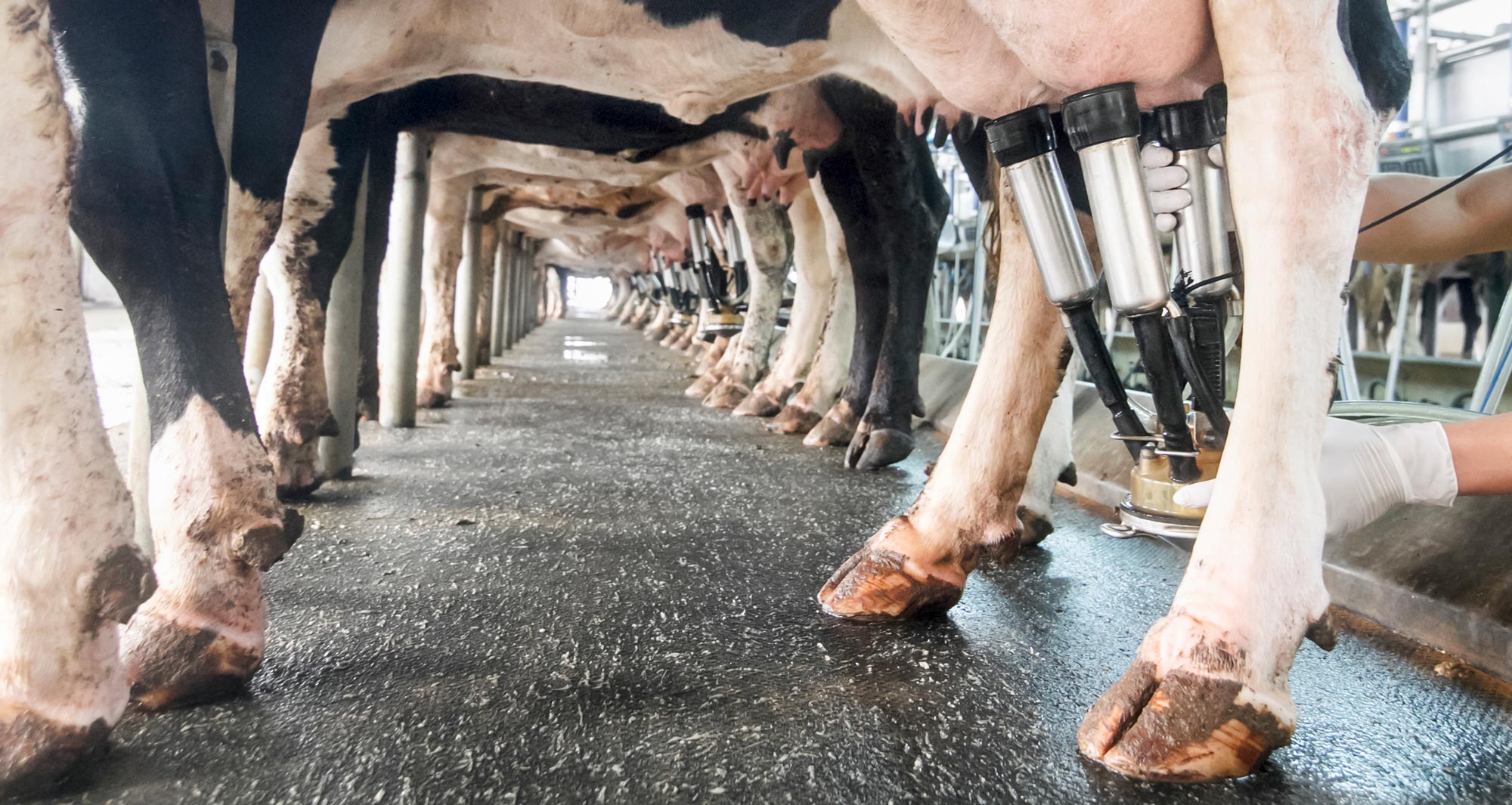 In the vast majority of dairy operations in the U.S., the truth is, cows do not have happy lives. They spend their time indoors, typically on hard, abrasive concrete floors and frequently connected to a milking apparatus. Most never see a blade of grass.
In the vast majority of dairy operations in the U.S., the truth is, cows do not have happy lives. They spend their time indoors, typically on hard, abrasive concrete floors and frequently connected to a milking apparatus. Most never see a blade of grass.
iStock.com/Toa55
They are artificially impregnated to ensure they continue to produce the maximal quantity of milk. Plus, they are fed antibiotics. And their feed is often contaminated with herbicide and pesticide residues from the genetically modified beans and grains they eat. Some are injected with genetically engineered growth hormones.
Recently, the dairy industry has been called out for its cruel treatment of these gentle animals. Even the #metoo campaign has been used to expose the cruel treatment of dairy cows.
A dairy cow will spend much of her life hooked up to milking machines that limit movement and can cause painful infections in her udder. Her babies are taken away just days after being born so that the milk can be bottled and sold.
Other Problems With The Dairy Industry
The dairy industry is also directly tethered to the notoriously cruel veal industry. Female calves become dairy producers, and male calves are often sent into confinement to be raised for veal meat.
And then there’s dairy’s impact on the planet.
Livestock is responsible for a significant amount of greenhouse gases. The United Nations puts the industry 14.5% of all GHG emissions — slightly more than transportation, which produces about 14% of total GHGs worldwide.
In California, the largest dairy-producing state, water usage for livestock is also of concern. One-quarter of California’s water budget goes toward producing beef and dairy. This is more water than all the businesses and homes in the state.
But the dairy industry does its best to keep all this from consumers. Clever marketing (“Got Milk?”), the prevalence of red barn imagery and toothy cow smiles on dairy labels, and other tactics have long convinced consumers this stuff is healthy and even necessary.
But with U.S. milk consumption down considerably, the dairy industry’s days as a dominant food industry force may be numbered. In fact, numbers from the USDA show that Americans are drinking almost 40% less dairy milk than they did in the 1970s.
The Demand for Plant-Based Milk Is Booming
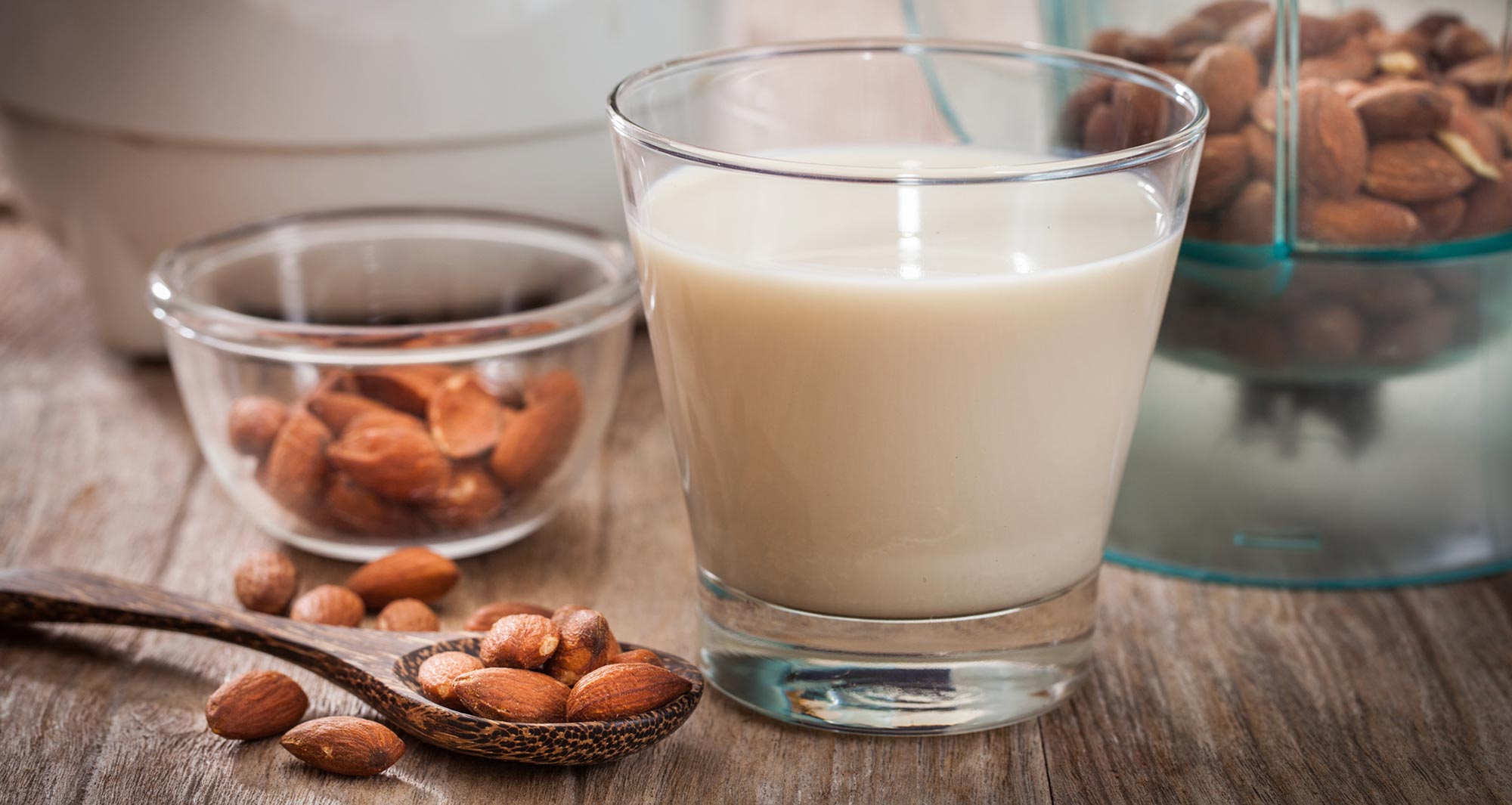 iStock.com/naito8
iStock.com/naito8 As it turns out, people want more options than just whole, 2%, or skim milk. They want new flavors — and not just chocolate. They want milk varieties that are reinvigorating their taste buds. And they want plants.
Non-dairy milk is the leading driver of the plant-based foods category, growing more than 60% in the last five years to more than $2 billion in sales in 2017.
Sales of dairy are expected to drop by another 11% between 2015 and 2020, as a steady decline continues. On the other hand, nondairy milk sales are expected to continue seeing record-breaking and milk-shaking increases. Dean Foods, a leading dairy producer, experienced a 91% decline in its net income from 2016 to 2017.
Elmhurst Dairy was once a thriving dairy producer, but declining interest and lackluster sales led the company to reinvent itself. Now known as just Elmhurst, the company has dropped cow’s milk for a booming plant-based milk business.
The company is a leading producer of non-dairy nut-milk products, including milk made from almonds, cashews, walnuts, hazelnuts, and peanuts.
Why Dairy Might Not Be The Best Choice for Your Health
The dairy industry has spent millions of dollars touting milk as “nature’s most perfect food.” And it is. For baby calves. But what about for humans?
We are the only species on earth that drinks milk after infancy. And in all the years that humans have been around, we’ve only been drinking the milk of cows for the last few thousand — a minimal portion of our time on this planet.
Dairy milk does have all the nutrition calves need to grow. As a result, it’s full of many important nutrients, and it provides an abundant source of calcium, vitamin D, riboflavin (B2), vitamin B12, potassium, and phosphorus. But since modern milk almost always comes from recently pregnant cows, it also contains hormones that don’t do a human body any “good” at all.
These hormones are thought to be one of the reasons that dairy consumption has been found to be linked to increased rates of acne, and to increased risk of certain cancers — especially prostate cancer.
Many studies have explored the link between dairy products and heart disease. Perhaps the largest of them, conducted by Harvard Chan School researchers and published in the American Journal of Clinical Nutrition in 2016, reported on research done with 43,000 men and 187,000 women.
When calories from full-fat dairy products were replaced with carbohydrates from whole grains, the risk of heart disease dropped by 28%. Replacing dairy products with red meat, on the other hand, led to a 6% increase in heart disease risk.
Does Dairy=Strong Bones?
So what about the belief that milk is necessary for strong bones and the prevention of osteoporosis? Not true.
Clinical research shows that dairy milk has little or no benefit for our bones. For example, the Harvard Nurses’ Health Study, which followed more than 72,000 women for 18 years, showed no protective effect of increased milk consumption on fracture risk.
Most People In The World Can’t Digest Dairy
Another major problem with dairy consumption is lactose intolerance. As infants, our bodies produce a digestive enzyme called lactase, which breaks down lactose from mother’s milk. But as we grow up, many of us lose the ability to do that.
By adulthood, about three-quarters of the world’s population is unable to break down lactose, and there’s a strong racial dimension to lactose intolerance. The only ethnic group on the planet that can usually digest lactose is Caucasians. Most people of African, Asian, Arab, and Indigenous ancestry cannot.
As Caucasian-centric movies, corporations, and even government policies have promoted dairy product consumption around the world, they’ve unintentionally subjected billions of people to significant digestive problems. Lactose intolerance can cause nausea, vomiting, and diarrhea.
More Doctors Are Talking About The Problems with Dairy
Increasing numbers of doctors and researchers are now recommending against dairy 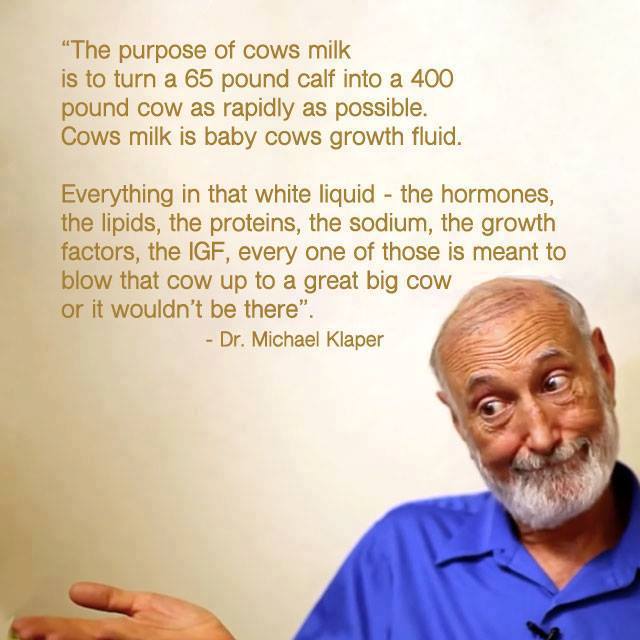 consumption. Author and nutritional authority Michael Klaper, MD, said to FRN:
consumption. Author and nutritional authority Michael Klaper, MD, said to FRN:
“If there was one substance I could eliminate from the American diet immediately, it would be those substances made from the secretions from the udder of a cow: dairy products.”
Plus, according to 10-time New York Times bestselling author Dr. Mark Hyman, dairy consumption is strongly linked to digestive issues and may even be connected to an increased risk of some types of cancer — including prostate cancer and breast cancer.
“Our bodies just weren’t made to digest milk on a regular basis,” Dr. Hyman explains. “Instead, most scientists agree that it’s better for us to get calcium, potassium, protein, and fats from other food sources, like whole plant foods — vegetables, fruits, beans, whole grains, nuts, seeds, and seaweed.”
Neal Barnard, MD, of the Physicians Committee for Responsible Medicine, wrote:
“Dairy products are packed with fat and cholesterol and may increase the risk of health problems ranging from asthma to some types of cancer. An elevated risk of prostate cancer incidence and mortality has been associated with dairy consumption and the same may be true for ovarian cancer.”
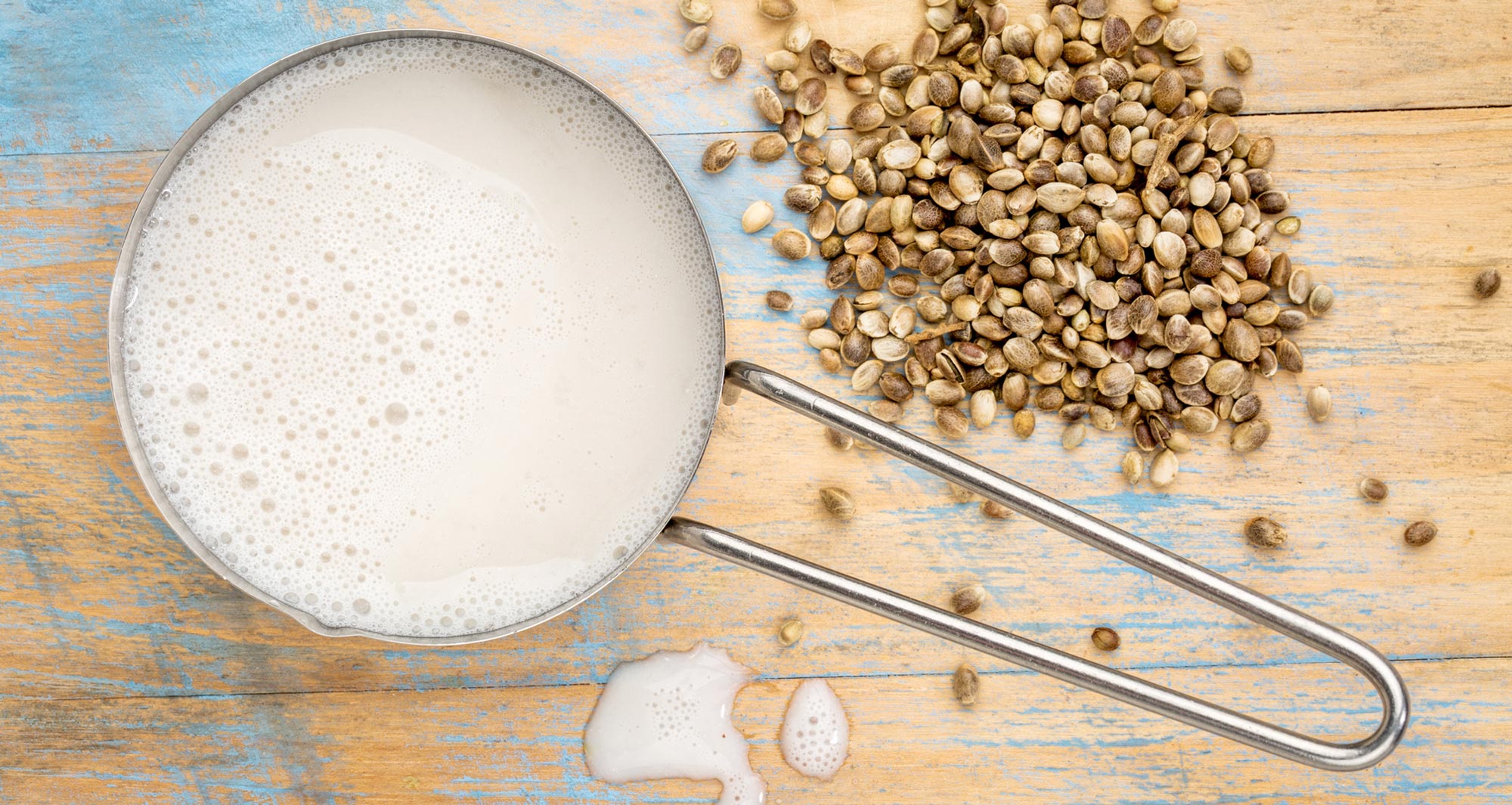 So overall, it seems that for many people, moving away from dairy milk may be a positive step.
So overall, it seems that for many people, moving away from dairy milk may be a positive step.
Plant-Based Milk Offers Health Benefits — Without The Cruelty
iStock.com/marekuliaszMore at: https://foodrevolution.org/blog/problems-with-dairy/
_______













No comments:
Post a Comment